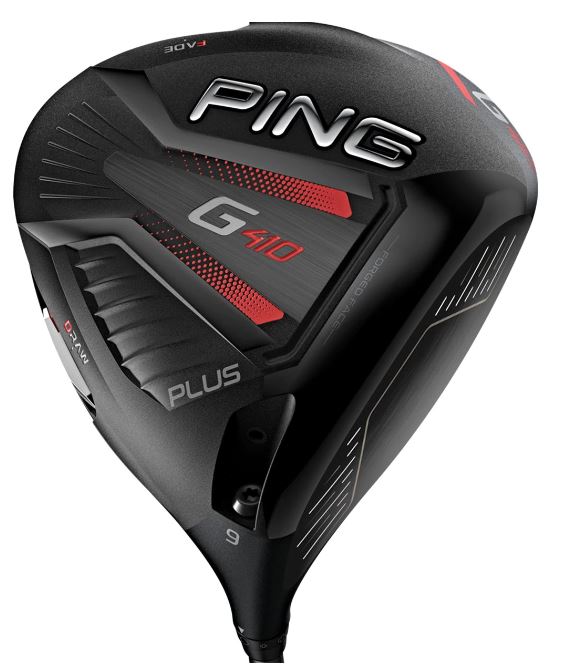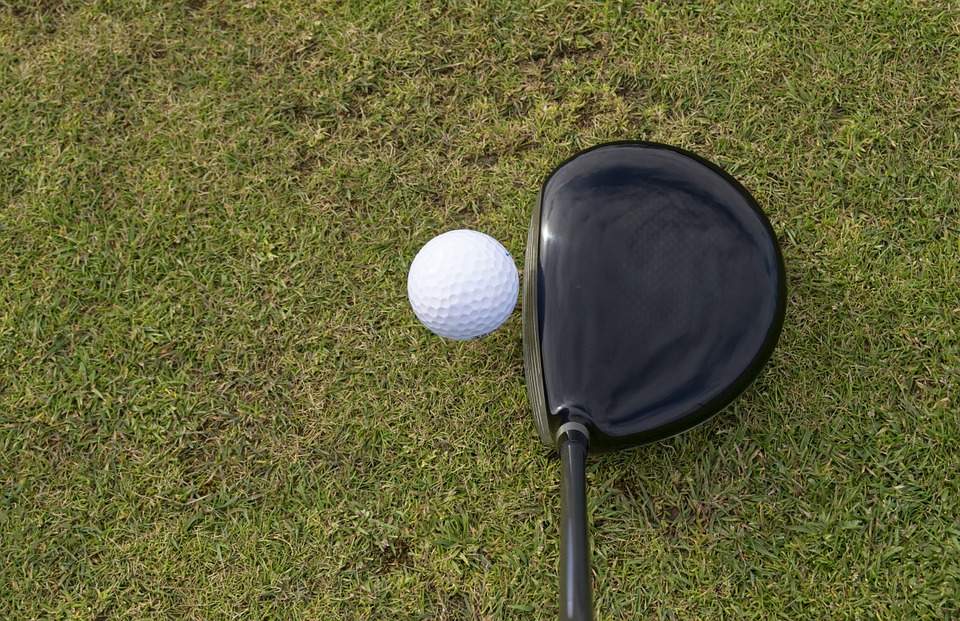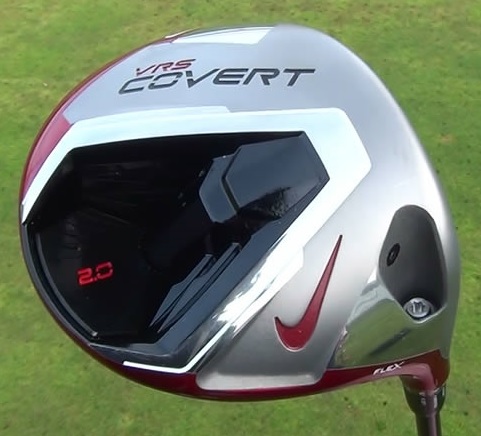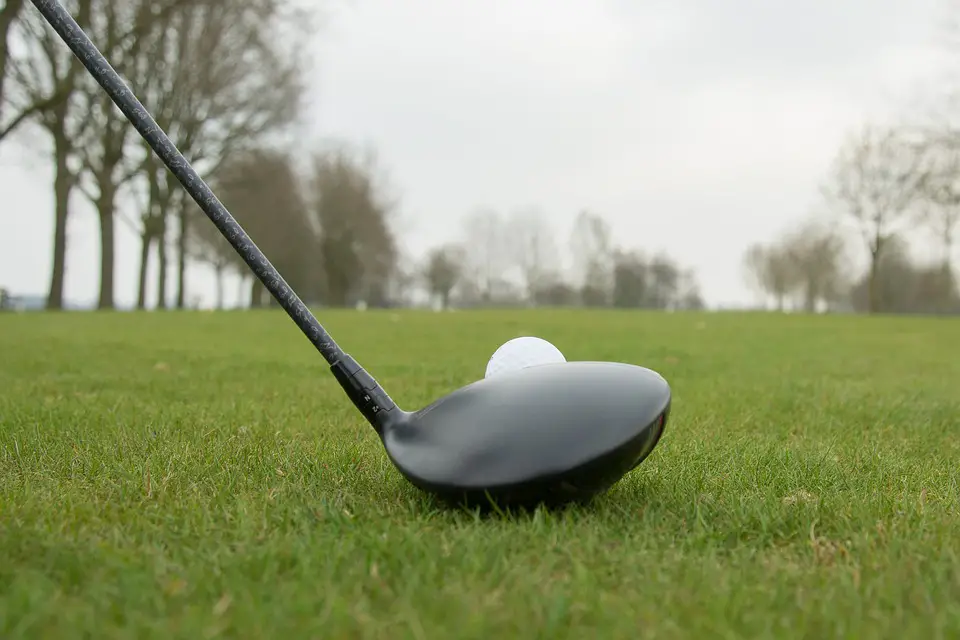If you’re searching for the most forgiving drivers, you’re likely either a beginner golfer or a high handicapper. That’s good news, as this list is made specifically for you.
Golf can be an extremely rewarding and extremely frustrating sport. Maybe you’re struggling to find time to practice, or you just want to optimize every aspect of your game.
No one strikes perfectly every time – not even the pros – so it’s important to pick the most forgiving driver in order to shave strokes off your game and make sure you enjoy yourself as much as possible.
Our goal is to provide you with the ammo you need to make the most well-informed decision – that’s why we created this list to help you find the best drivers for beginners and high handicappers alike.
If by some chance you haven’t bought any clubs at all just yet, be sure to take a look through our top picks of the best golf clubs for beginners to get started.
Our Picks for the Most Forgiving Drivers
In the event you don’t have time to read through our reviews and just need some quick suggestions, here are our top selections for the most forgiving drivers on the market today:
- Best Overall: Cobra King F9 Speedback
- Best Value: TaylorMade R15 460
- If Money’s No Object: PING G410 Plus
- Best for Customization and Adding Yards to Your Drive: Callaway Big Bertha Alpha 815
- Most Forgiving for High Handicappers: Cleveland Launcher HB Turbo
- Best for Keeping it Simple: Callaway Mavrik Max
- Best Distance and New Entry: TaylorMade M6
- Best Budget Option: Wilson Staff Launch Pad
Cobra King F9 Speedback

Cobra’s King F9 Speedback was inspired by the world’s fastest supercars, and you can certainly see that in its design. According to Cobra, it’s the first-ever driver that combines a low center of gravity (CG) with an aerodynamic head.
Cobra asked golfers what they wanted in a driver, and the top answers they got were speed, accuracy, and forgiveness. This driver delivers on all three!
One really cool feature of the King F9 is that it has Cobra Connect built-in, which is a shot-tracking system that connects to your smartphone through Bluetooth to help you track your drives and store data for analysis. How’s that for added value?
The F9 also features an ultralight carbon wrap crown, saving you weight where you need it. This driver combines a lower, pushed-back center of gravity and an increased MOI which will result in straighter hits and great performance in an overall well-rounded, balanced driver.
Bottom line is that if you want speed and distance without trading off forgiveness, the Cobra King F9 Speedback is a great choice for a forgiving driver.
Pros:
- Great option for all golfers
- Outstanding speed and distance without sacrificing forgiveness
- Cobra Connect sensor technology is a huge value-add
- Adjustable loft
Cons:
- Wrench needed to adjust club loft not included
TaylorMade R15 460 Driver

The TaylorMade R15 460 is a tried and true favorite among golfers and reviewers alike for good reason: it combines multiple adjustment points, advanced technology, and premium materials at a reasonable price point.
This driver feels great in the hands, and it’s Front Track system helps to reduce spin and increase the size of the sweet spot on the club face.
The back of the club features two sliding weights that are adjustable so you can control and correct draws or fades, and features an adjustable launch sleeve to help you precisely dial in your launch conditions.
If you’re looking for a club that has a very forgiving (read: HUGE) sweet spot and helps reduce spin, the TaylorMade R15 460 Driver is for you.
Pros:
- CG is lower and forward, helping to reduce spin
- Sliding split weights help correct draws and fades
- Front track system reduces spin and enlarges the sweet spot
- Loft adjustment in four degree increments
Cons:
- A little stiffer (less flex) than some other clubs on this list
- Wrench and club head cover not included
PING G410 Plus Driver

The PING G410 Plus is a favorite forgiving driver among experienced golfers due to its excellent engineering, premium materials, and customization options.
Three movable weight positions shift the club’s CG to influence your shot direction and can correct your shot by about 10 yards (so there’s actually 20 yards of shot correction between the draw and fade settings).
Dragonfly technology brings a higher MOI for better distance and forgiveness, with the crown (rear) of the club being the thickness of only about 3 dollar bills stacked! This weight savings results in a better CG location in the PING G410 Plus.
Many golfers report seeing as much as 30 additional yards gained from this driver, as well as great feel and feedback from each strike – not to mention the overall forgiveness on mishits.
Pros:
- Streamlined design reduces drag and increases distance and club head speed
- Golf Pride Tour Velvet 360 Grip offers the look and feel of Tour Velvet with a non-slip surface pattern
- Adjustable weight to correct draws and fades
- Tuning hosel allows golfers to fine tune loft and lie angle specifications in 1.5 degree increments (tool is included)
- Includes a color-coordinating headcover
Cons:
- New adjustable hosel model is incompatible with previous years’ shafts (unless you change the attachment) – this is likely not a problem if it’s your first time shopping for the most forgiving drivers!
Callaway Big Bertha Alpha 815 Driver

So let’s call out the obvious here: this driver looks really cool. Of course, we’d be nuts to suggest you purchase a forgiving driver on looks alone, so let’s dive into what makes the Callaway Big Bertha Alpha 815 so great.
The Alpha 815’s RMOTO technology offers an ultra-thin club face which maintains stability while increasing energy transfer at the point of impact. The club head also has reduced spin that’ll help increase your shot distance.
Adjustability is a big factor in this driver, with adjustments offered for CG, weight modifications to set your driver for neutral, fade, or draw biases, and a hosel that offers eight different loft (-1, S, +1, +2) and lie angle (Draw or Neutral) configurations.
Many golfers report an increase of between 20 and 30 yards on their drives with this club while still benefiting from a great amount of forgiveness, making it a top pick in our search for the most forgiving drivers.
Pros:
- Heightened adjustability and customization options
- Premium head and shaft design
- Reduced spin and long drives packed in a forgiving package
Cons:
- Getting your adjustments dialed in can take some time
- Some golfers report that the regular flex shaft is too flexible (this will likely not be an issue for most beginners or high handicappers and is largely based on preference)
Cleveland Launcher HB Turbo

Cleveland’s Launcher HB Turbo driver may look a bit basic, but don’t let this fool you: this driver packs some great technology and performance.
The HB stands for HiBore Crown technology, which moves the weight lower and further back on the club head, allowing the driver’s crown to flex more at impact which increases ball speed and improves launch, all while keeping spin low.
The Cup Face of the driver offers a large sweet spot, and the Flex-Fin sole makes sure your mishits stay in play. Both of these result in a very forgiving driver that lets you drive the ball further and minimizes shanking – all at an affordable price point.
Pros:
- Competitive price point
- Understated design will suit most players
- Huge sweet spot and overall forgiveness
Cons:
- Lacks adjustability options
Callaway Mavrik Max Driver

Callaway’s Mavrik Max Driver uses great materials, like a lighter-than-standard titanium, and pairs it with internal technology that offers a higher MOI for better ball speed and forgiveness.
Adjustability is offered in the Mavrik Max through two interchangeable weights that are positioned in the sole near the rear and heel, allowing you to configure for max forgiveness or max draw.
This is a consistently performing driver that also offers some adjustability without getting overcomplicating things, making it a great forgiving driver.
Pros:
- Adjustability options are available without getting too complex
- Solid, consistent performance in distance and accuracy
Cons:
- Priced higher than other drivers in our top picks
TaylorMade M6 Driver

TaylorMade set out to push the limits when they created the M6. No, really – they calibrate each driver to make sure it’s as close to the game’s legal limits as possible!
TaylorMade’s Speed Injection process maximizes the M6’s delivery on ball speed and distance, while Twist Face technology provides better forgiveness on off-center hits, reducing side spin.
The slot on the bottom of the club, dubbed Hammerhead 2.0, helps to deliver a larger sweet spot and bring even more forgiveness to the table. Loft and lie can be adjusted into 12 different positions as well.
Test have shown that the M6 is consistent at being one of the longest drivers in golf – while still offering a great amount of forgiveness.
Pros:
- Large sweet spot
- Better spin correction on mishits
- Engineered for long shots
Cons:
- Limited adjustability options
Wilson Staff Launch Pad Driver

While the Wilson brand may not be as exciting as some of the names mentioned above, Wilson’s built its reputation on providing quality sports gear at reasonable prices, and the Staff Launch Pad is no exception.
One key thing to consider here is that this driver certainly offers forgiveness – it’ll keep your shots tight, especially if you’re prone to slicing. On the other hand, this driver has a shorter shot distance compared to others on this list.
The Staff Launch Pad is best suited for players who are either on a tight budget, or those with faster swing speeds and good distance who simply need better shot control.
Pros:
- One of the highest performers in terms of shot dispersion
- Great for beginners struggling with slice
- Budget friendly price point
Cons:
- Shorter distance than other drivers on this list
- No adjustability options
Our Top Picks for the Most Forgiving Driver – Wrapping Things Up
If you’re simply looking to take our word for it, our top choice for the most forgiving driver is the TaylorMade R15 460, due to its combination of great technology, quality materials, adjustability, price point, and flex. Talk about a sweet spot!
Get yours here:

Choosing the best driver isn’t easy, but keeping your play style, swing speed, and issues of your current game in mind are going to be a great help as you make your purchase.
We hope this walkthrough of our top 10 most forgiving driver picks helped you in your journey.
Why Use the Most Forgiving Driver?

The obvious answer here is that we’re looking to bring more consistency and a better score to your game, but let’s dive into how the best driver for beginners and high handicappers will help.
A Bigger Sweet Spot
Advances in club technology have resulted in your driver having a larger club face, increasing the overall “sweet spot” and forgiveness of drivers on the market. This can be a great benefit to players still struggling with accuracy, or those with higher than average swing speeds.
Distance
Forgiving drivers have lighter club heads and better materials which better compensate for slower swing speeds, and the larger club face actually works a bit like a trampoline, “springing back” into place and transferring that energy to the ball – all which allow you to drive longer shots.
Control
The lighter club heads on forgiving drivers allow golfers to focus on other key areas of their swing, improving overall enjoyment of the sport and repeatability of performance. Some clubs even have adjustable weights to help golfers tailor their driver to their exact preferences.
Increased Confidence and Game Enjoyment
Golf is both equal parts confidence and ability. As we previously discussed, the improved consistency in your game and ability to better focus on your swing mechanics will result in better scores- increasing your satisfaction on the course and confidence in your abilities.
Put Time and Money Back In Your Pocket
Using a forgiving driver will help you save both time and money on lessons, the driving range, and hunting for (or replacing) lost golf balls – these improvements will easily help a forgiving driver pay for itself in short order!
What to Consider When Choosing The Most Forgiving Driver

Our list of best drivers for beginners and high handicappers outlines some excellent top choices, but there are some key factors to keep in mind when choosing a forgiving driver. Read on to learn more.
Club Head Size and Weight
Previously, gear manufacturers used to use smaller heads, resulting in less driver forgiveness. Today, most club makers offer clubs in the largest legal club head size of 460cc to provide the largest driver club face and distance possible.
Some models – typically “tour” models – will have smaller club heads, and are better suited for more experienced players.
Heavier club weights can also be recommended for players with higher swing speeds in the event that control and accuracy are an issue. Heavier club head weights can also help golfers with faster swing speeds maximize their shot distance.
Here’s a video from Fit2YouGolf discussing the effect weight has on your driver’s performance:
Flex (or Forgiveness) and Shaft Options
One big advantage for modern golfers is that most major manufacturers have some really excellent stock shafts with their drivers. You’ll want to pay attention to the driver’s flex and kick point when making your selection.
Flex plays a key role in creating the ideal launch angle (that is to say, the angle at which the ball leaves the clubface after impact). If you’re experiencing slices, your driver may have too little flex. Try a driver with more flex and you’ll likely see an improvement here.
The kick point (also known as the flex point or bend point) of a driver is the part of the golf shaft where the shaft experiences the greatest amount of bend when the tip (or club head) is pulled down. Simply, this is the center point of the entire flex area of the shaft when flex occurs during your swing.
If you’re seeing balls hit too low, look for drivers with a low kick point which will increase your launch angle and drive the shot higher. If you’re consistently hitting the ball too high, look for a forgiving driver with a high kick point to decrease the launch angle, bringing the ball path lower.
Rick Shiels does a great job of demonstrating the flex of different shaft styles in this video:
Adjustability
Some modern drivers have adjustable components, allowing players to modify a driver’s center of gravity, lie angle, and loft. If you’re looking for a more forgiving driver, this is a huge advantage when compared to non-adjustable drivers. The customization can help take strokes off your game as you dial in the different components of an adjustable driver.
Take a look at GolfTec’s video on adjusting drivers below:
Loft
A driver with more loft will allow you to get the ball in the air at your ideal launch angle (or at least closer to it). The longer the ball stays in the air, the longer it flies, so loft is crucial for maximizing your shot distance.
One of the biggest problems for beginners and high handicappers is that their slower swing speeds creates a challenge when it comes to getting the ball in the air at that perfect launch angle.
Selecting a driver with more loft (usually 10.5 degrees of loft or higher) will get you hitting the ball in the air, and can also help with your shot accuracy.
Cost
The bottom line here is that golf is expensive (surprise!) and simply put, your driver will likely be the largest investment you’ll make in your gear. The good news here is that by choosing a forgiving driver, you’ll see the biggest return on your investment.
Our top picks here cover a range of different price points to suit most budgets. If that’s still a bit too much at first, you can always start off with a pre-owned club.
Factors that Make Up the Most Forgiving Drivers
Club Head
As we mentioned earlier, today’s drivers have much larger club heads and club faces. The size of the club head directly relates to how much of the twist’s weight resistance is transferred into the club head. Simply put, the larger the club head, the greater the power in your shot.
Cavity Back

A driver’s back (or bottom) can be solid or hollow. If it’s hollow, it is called a “cavity back” driver.
Cavity back drivers help to shift the mass to the sides and club face of the club head, which makes for a larger sweet spot – resulting in a more forgiving driver.
Offset

Most drivers you’ll see on the market are offset drivers, meaning their face is set back from the hosel (or neck) of the club, instead of aligning directly with the shaft. Think of a non-offset driver as forming a 90-degree angle with the club head.
An offset aids in accuracy by placing the clubface barely behind the shaft, giving the golfer an extra (very short) moment to bring the club to a square impact position.
Offset drivers also move the center of gravity a bit farther behind the ball, resulting in higher shots. This results in longer drives for many players.
Offset drivers are generally recommended for players with lower swing speeds (less than 85 mph).
High MOI (Moment Of Inertia)
A driver’s Moment of Inertia (or MOI) refers to the driver’s resistance to twist around its axis. In English, a driver with a higher MOI will transition more weight to the center of the club face, which makes for a bigger sweet spot.
Low Center of Gravity
Drivers with a low center of gravity (or CG for short) will allow you to hit the ball higher with more backspin, bringing additional control to your shot. Some players will experiment with different CGs (or adjust them if their driver allows) to best suit their play style.
Your Strengths and Weaknesses
Choosing the best forgiving driver has a lot to do with what your game looks like today, as well as any issues you may be experiencing. Are you hooking or slicing the ball? Are shanks a problem? Are you getting too high of shots?
All of these issues can be remedied by a forgiving driver but you must keep the problem(s) you’re trying to fix in mind when making a selection.
Properly Caring for Your Driver (and Other Clubs Too)
It’s important to take care of your equipment no matter what your investment level is. A little bit of TLC will go a long way in keeping your clubs in tip-top condition for years to come.
Store Your Golf Clubs Properly
A modestly temperate place, such as the garage or your basement are fine places to store your clubs. The trunk of your car is not! Some parts of clubs are held together with glue, and the extreme heat generated in a car’s trunk can cause this glue to break down over time, resulting in damage to your clubs.
Dry Your Golf Clubs After Use
This may seem obvious, but moisture plus metal equals rust. You don’t want rusty clubs! Dry your clubs before storing them (and dry them before placing them in your bag whenever possible).
Use Club Head Covers

Your club heads are constantly knocking into each other – during transit, on the course, and when taking clubs in and out of your bag. Head covers are an easy and inexpensive way to prevent bumps and dents, keeping your clubs in high-performance mode.
Keep Your Clubs and Club Heads Clean
Sweat, dirt, grime, and mud can all accumulate on your club shafts and club heads as you play. Wipe them down with a damp cloth and mild soap (typically 2 teaspoons of mild detergent in a bucket of water is best), followed by a clean damp cloth.
Visually Inspect Your Clubs
Take a look periodically at your clubs to make sure you don’t have any major dents or scratches, look for any grips that may be frayed, and inspect your grooves to make sure they’re not worn out. Take note and be sure to repair these right away. You can use a groove sharpener if your grooves are getting too shallow, which can cause your ball to fly higher and longer than you’re used to.
Conclusion
Now that you’ve selected the best driver for your game, head on over to our golf ball selector guide to find the perfect match for your new forgiving driver! After finding the best golf ball for your game, take a few moments to brush up on your golf swing mechanics while you’re here.


Wow! What an amazing resource. Thanks for helping me salvage my game.